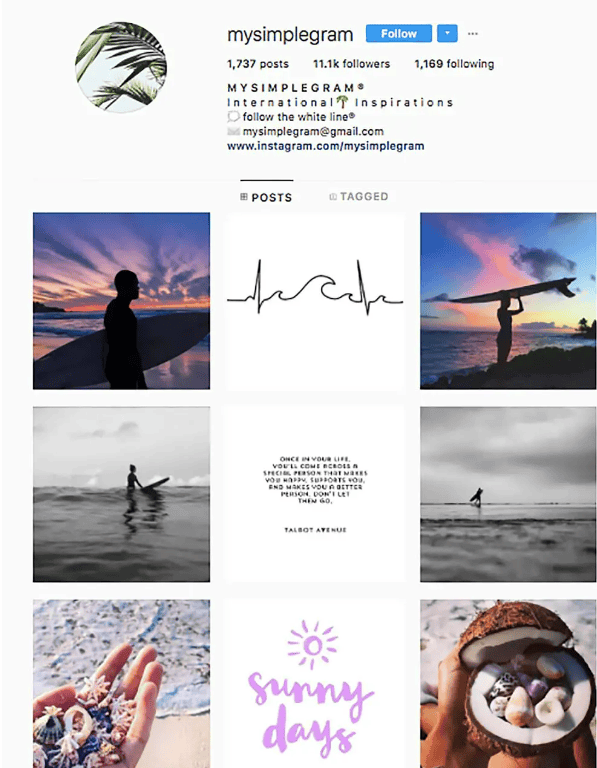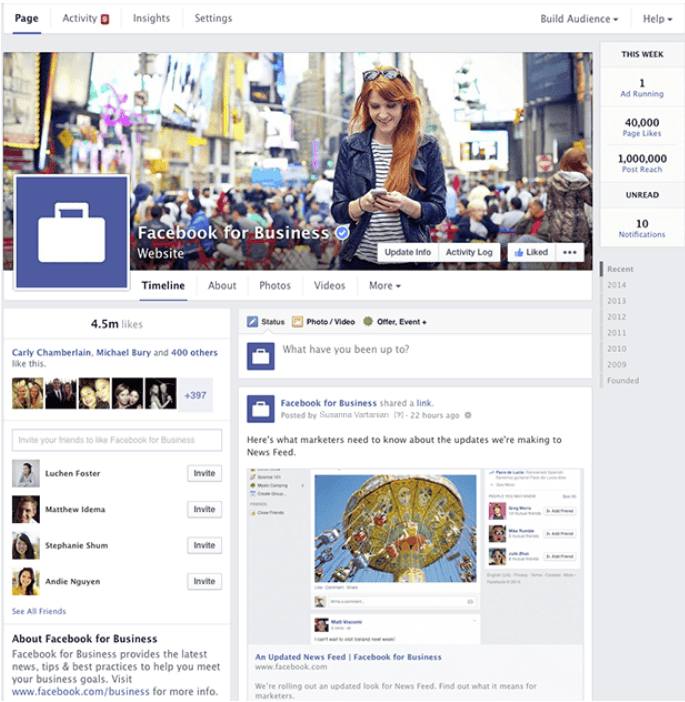Secrets Revealed: Addictive UX / UI Design for Social Media
The design of social media is no small feat. From the UI to UX, the magic of social media design lies in creating a seamless, intuitive, and visually appealing platform that brings in more users.

Have you ever stopped to think about why you keep checking social media apps on your smartphone so often? It’s not just by chance that these apps have become so intertwined in our lives today. The apps are designed in such a way, by applying psychological principles, to keep you hooked to your smartphone. From the moment you open an app, you are captivated by an engaging and addictive experience that keeps you scrolling for a long time.
In this article, we explore the role of design in making social media apps addictive. What are the various design elements they use and the psychological principles they apply? Let’s take a look!
UX/UI design and social media psychology
People use social media apps day in and day out today. For businesses, this opens up a tremendous opportunity to target their potential customers on a large scale. As a result, businesses today rely on social media for boosting their online presence. This makes UX in social media all the more crucial as psychological studies show that social media fulfills more than the basic needs of users to communicate. According to DATAREPORTAL,
- There are 4.76 billion social media users around the world in January 2023 which is equal to 59.4% of the total global population.
- There has been a substantial increase in social media users in the past twelve months, with 137 million new users joining social media.
From sharing their vacations, achievements, food, events, and more, users are finding social media apps as a medium to seek validation through likes, shares, and comments. So, a great user experience is important to cater to the different expectations, wants, and needs of the users. Designers use the right combination of function, color, and image as well as apply the proper psychological principles to make social media platforms engaging.
Take a look at the success story of Instagram in which UI/UX played a crucial role. When the app was launched, the creators focussed on designing an intuitive and visually appealing UI that gives a delightful experience while sharing photos with friends and family. They wanted the app to be usable for non-tech-savvy users. For this, they dedicated countless hours to refining the design to ensure that it is not only functional but also aesthetically pleasing.
This focus on UI/UX paid off as users flocked to use the app to share photos, and their stories and even to promote business. People loved how Instagram made it simple and fun to connect with friends and family. Visual storytelling was the most appreciated feature. Today, Instagram has more than one million monthly active users. Its continued success can be attributed to its clean and intuitive interface. This is a testament to the power of design in shaping the way we engage with social media.
Must have UI UX design elements for social media apps
Let us discuss some UI/UX design elements social media apps use to glue their users.
Visual social media

The visual hierarchy of Instagram guides the user to the profile details and posts
The visual design of social media apps is what captures the attention of the users and keeps them engaged with the platform. A well-designed social media app puts content or image in the right hierarchy to create a positive user experience. Whether it is a striking photograph, fun meme, or short video, visual content is key to creating an engaging social media experience. This is why image and video-centric platforms encourage users to come back again and again.
The use of color, typography, and layout is also essential while designing a social media app. Bold and vibrant colors are often used to convey a sense of energy and excitement. For example, the classic font of TikTok is friendly and doesn’t distract the user from the content.
What is more interesting is that even if there is a technical glitch in social media apps, people continue to love them based on their aesthetic aspects.
The power of a striking layout

The neat layout of the Facebook page is user-friendly and visually appealing
A memorable user experience is what UX/UI designers keep in mind while designing the layout of a social media app. Because the layout is the first thing users notice when they open a social media app. A well-organized layout with a contrasted menu and easy-to-access tabs keep the users engaged and curious to explore the app further. A cohesive and consistent layout improves the connectivity of the users with the content of the page. It can make a great first impression leading to increased user retention.
Instagram uses a z-layout which makes it simple and intuitive. Users gaze explores the options of the app in a zig-zag manner quickly and easily. Also, to enhance the visibility of the user, Instagram has rounded off the profile.
Art of readability and engagement

The description and the visuals of the YouTube short video are engaging and user-friendly.
Social media app design prioritizes readability and engagement to attract and retain users as well as to build an engaged community. Clear text, high-quality images, and engaging content grips the attention of the users and entertains them while they scroll through the content for a long duration.
Clear and concise language, easy-to-read fonts, and appropriate use of visual elements have a big role in how users [perceive and engage with the content. If the content is difficult, users are likely to lose interest and move on to other platforms for information.
Engagement is another important factor that makes the users actively interact with the app like commenting and sharing content. Say, for example, TikTok reels are heavily used by people to entertain their community and for viral growth. This type of high-level engagement keeps users interested and coming back for more.
User-friendly icons to click with ease
The icons used on Facebook are intuitive enabling easy user navigation.
Icons, although small, can have a great impact on a user’s experience. User-friendly icons are an asset to all social media platforms. Icons and buttons communicate with the users what options perform what operations. If the user quickly gets the idea behind a particular UI, they will interact with the app more effectively.
The bell icon of Facebook depicts that by clicking it, users can stay up to date with the latest events. Similarly, the heart icon of Instagram can be clicked to like a post or comment. Icons are a tool of communication and designers make them appealing and clear to keep the engagement intact.
The UX and UI keep us scrolling
The design of social media is no small feat. From the UI to UX, the magic of social media design lies in creating a seamless, intuitive, and visually appealing platform that brings in more users. As social media continues to evolve, so will the design elements that keep us scrolling. However, it is certain that the designers behind these apps will have to continue to push the boundaries of what is possible. Let’s see how new and innovative ways are going to give new dimensions to connect people around the world.
References:
https://medium.com/sigma-xi-vit/how-instagrams-ux-design-make-us-addictive-7c6f57834964
https://www.usertesting.com/blog/social-media-psychology-ux
https://procreator.design/blog/the-importance-of-ux-in-social-media-apps/
https://datareportal.com/reports/digital-2021-october-global-statshot
https://blog.hootsuite.com/tiktok-fonts/
Author Bio
Aparna is a content writer at Aufait UX, a design agency in India. She is fascinated by the user-centric approach to digital product design. In addition to her passion for UI UX, she leverages her writing expertise to highlight design-related topics.
FAQ
What is Addictive UX/UI Design in Social Media?
Addictive UX/UI design in social media refers to designing user interfaces and experiences that are highly engaging and encourage prolonged and repeated use of social media platforms.
Why is Addictive UX/UI Design Important for Social Media Platforms?
This design approach is important for social media platforms as it increases user engagement, time spent on the platform, and often contributes to higher user retention and advertising revenue.
What Features Contribute to Addictive UX/UI Design in Social Media?
Features contributing to addictive design include intuitive navigation, personalized content feeds, interactive elements like likes and shares, instant notifications, and visually appealing layouts and colors.
How Do Personalized Content Feeds Influence Addictive Design?
Personalized content feeds keep users engaged by showing tailored content based on their interests and interactions, making each user’s experience unique and increasing the time they spend on the platform.
What Role Do Notifications Play in Addictive Social Media Design?
Notifications play a crucial role by constantly drawing users back to the platform. They alert users to new content, interactions, and updates, keeping them engaged and connected.
How Can Color Psychology Be Used in Addictive UX/UI Design?
Color psychology can be used to evoke specific emotions and responses. For example, bright and contrasting colors can grab attention and stimulate user interaction.
What Is the Impact of ‘Likes’ and ‘Shares’ on Addictive Social Media UX/UI?
‘Likes’ and ‘Shares’ create a sense of social validation and interaction, encouraging users to engage more with the content and the platform, contributing to addictive user behavior.
How Does the Infinite Scroll Feature Contribute to Addictiveness?
The infinite scroll feature offers a continuous stream of content with no defined endpoint, which can keep users engaged for longer periods, often leading them to spend more time on the platform than intended.
What Ethical Considerations Arise with Addictive UX/UI Design?
Ethical considerations include concerns about promoting excessive screen time, potential impacts on mental health, and the balance between user engagement and responsible design practices.
How Can Social Media Platforms Balance Addictive Design with User Well-Being?
Balancing addictive design with user well-being involves implementing features that promote healthy usage patterns, providing tools for digital well-being, and ensuring transparency in how user data informs content feeds.
How Does User Feedback Influence Addictive UX/UI Design in Social Media?
User feedback helps in refining the UX/UI to better meet user preferences, making the platform more engaging. Features that receive positive feedback are often enhanced to further boost engagement.
What is the Role of Gamification in Addictive Social Media UX/UI Design?
Gamification introduces game-like elements (like rewards, badges, or leaderboards) into social media, enhancing user engagement by tapping into the natural desire for competition and achievement.
Can Addictive Design Improve User Engagement Metrics on Social Media?
Yes, addictive design can significantly improve engagement metrics such as daily active users, time spent on the platform, and interaction rates (likes, comments, shares).
How Do Micro-Interactions Contribute to Addictive UX/UI on Social Media?
Micro-interactions, like animation for a ‘like’ or a subtle sound when a message is sent, provide immediate feedback to user actions, enhancing the overall experience and encouraging further interaction.
What is the Significance of Content Discoverability in Addictive UX/UI?
Easy discoverability of new and relevant content keeps users engaged and curious, encouraging them to explore further and spend more time on the platform.
How Does Responsive Design Influence the Addictiveness of Social Media Platforms?
Responsive design ensures a seamless and consistent experience across various devices, making it more likely for users to use the platform anytime and anywhere, thereby increasing overall engagement.
What Ethical Strategies Can Be Employed to Counteract Overly Addictive Design?
Ethical strategies include introducing features that track and limit usage time, providing reminders for breaks, and ensuring that design choices prioritize user well-being over mere engagement.
How Important is Consistency in UX/UI for Maintaining User Addiction?
Consistency in UX/UI is crucial as it reduces the learning curve for users, making the platform more intuitive and comfortable to use regularly, thereby contributing to habit formation.
Can Overly Addictive UX/UI Design Lead to User Burnout on Social Media Platforms?
Yes, overly addictive designs can lead to user burnout, where users become overwhelmed or fatigued by constant engagement, potentially leading to reduced platform usage over time.
How Do Trends in UX/UI Design Influence User Expectations and Addictiveness on Social Media?
Trends in UX/UI design can set user expectations for modern, intuitive, and engaging experiences. Platforms that adapt to these trends are more likely to attract and retain users, enhancing addictiveness.
How Does Simplified Navigation Enhance User Engagement in Social Media UX/UI?
Simplified navigation makes it easier for users to explore and use a platform, reducing frustration and keeping them engaged for longer periods.
What Role Does Aesthetic Appeal Play in Addictive Social Media Design?
Aesthetic appeal, including visually pleasing layouts and imagery, can significantly enhance user experience, making the platform more inviting and engaging to users.
How Can Animation and Motion Design Contribute to Social Media Addiction?
Animations and motion design can create a dynamic, interactive experience, capturing users’ attention and providing a more engaging and entertaining platform interaction.
What Impact Does Personalization Have on Addictive UX/UI Design?
Personalization, such as tailored content feeds and recommendations, makes the user experience more relevant and engaging, increasing the likelihood of prolonged use.
How Do Social Media Platforms Test and Optimize for Addictive Design?
Social media platforms often use A/B testing and user behavior analytics to understand what features most engage users, continually optimizing the UX/UI for increased addictiveness.
What is the Importance of Content Layout in Enhancing Social Media Addiction?
The layout of content, including how it’s organized and presented, plays a key role in retaining user attention and encouraging more prolonged and frequent platform interactions.
Can Excessive Addictive Design Features Have a Negative Impact on User Experience?
Yes, excessive use of addictive design features can overwhelm or frustrate users, potentially leading to a negative experience and reduced platform usage.
How Does Sound Design Influence Addictiveness in Social Media UX/UI?
Sound design, like notification tones and background music, can enhance the immersive experience, eliciting emotional responses that can contribute to a platform’s addictiveness.
What Ethical Considerations Should Designers Keep in Mind When Creating Addictive Social Media Experiences?
Designers should consider the potential impact on users’ mental health and well-being, strive for a balance between engagement and responsible usage, and avoid manipulative practices.
How Can Social Media Platforms Responsibly Implement Addictive UX/UI Features?
Responsible implementation involves providing user controls for customizing their experience, promoting healthy usage patterns, and being transparent about how and why certain features are used to encourage platform engagement.
You have a story to tell. We want to help.
Let’s create memorable content and reach tens of thousands of people.